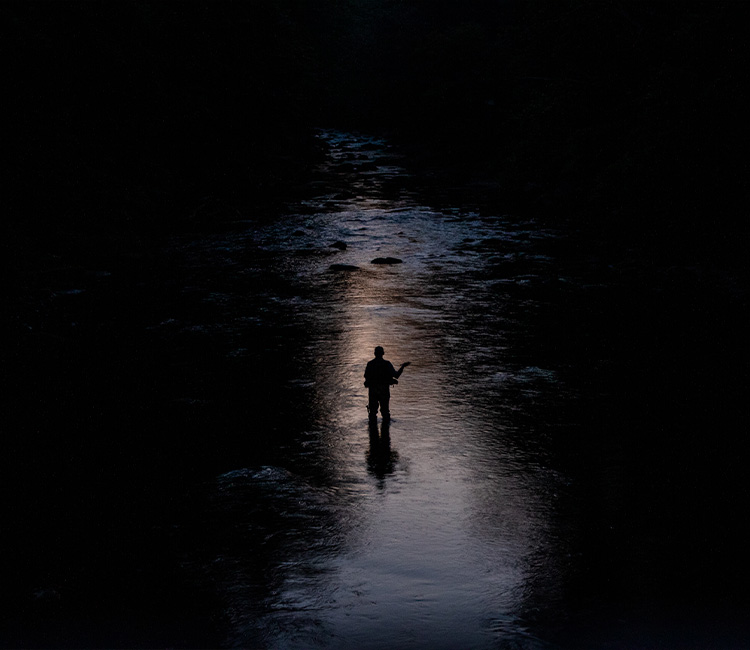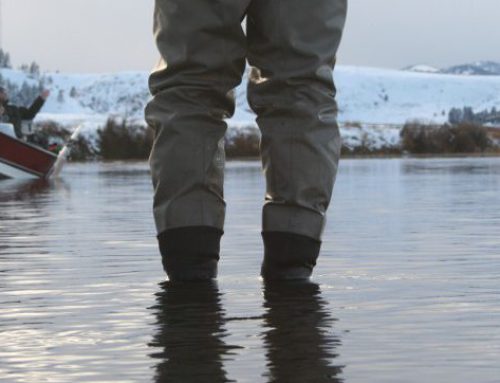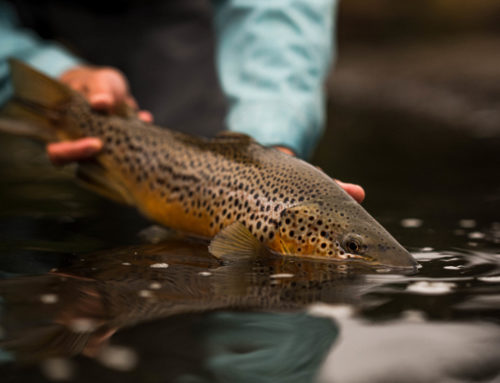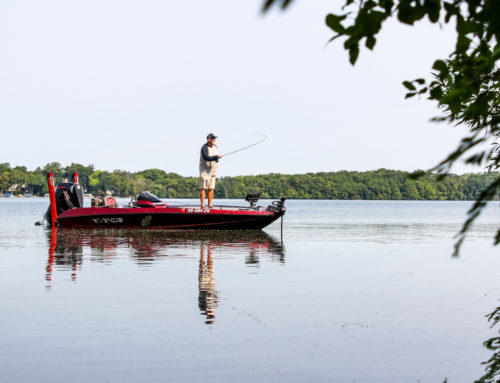We’ve seen the photos of Joe Humphreys holding monstrous trout at night. When fish grow large, they generally become nocturnal. So the key to targeting the biggest fish in your water is to hit them after the sun sets and the crowds are gone. Here are some tips for fly fishing after dark to target big fish at night.
Why You Need to Fish at Night to Target Big Fish
Fish prefer feeding in low light. Dawn and dusk are often the most productive times and it is the main reason why night-fishing works. At certain times of the year, hatches are more prevalent before sunrise or after sunset. However, the biggest reason to fish at night is that total darkness can get the larger fish to feed aggressively. Specifically the big ones. The largest fish in your waters will rarely feed in daylight hours. Darkness gives fish total cover and the security to feed, so it’s up to you to take advantage of that.
Staying Safe when Fishing at Night
When fishing at night safety is crucial. Wading in rivers is inherently dangerous, but doing it blind is asking for trouble. Fish the water you’re most familiar with, focus on a few runs or pools, and stick to them while you get your feet wet. Pack a good headlamp so you can see. Red light is the best to use, but if you only have white light, make it as dim as possible. Turn it on to get in position as stealthily as possible, then shut it off and wait a moment for both you, and the fish to settle. Once your eyes adjust and your feet feel solid, start casting. Fishing in the dark is a whole different experience, but safety should always be your top concern.

When it comes to throwing flies at night, it’s hard to go wrong with a streamer.
Tactics for Finding Big Fish at Night
A lot of big fish at night are caught using a streamer. Use a floating line with a short leader. Many night-time regulars fish a dark colored streamer as that creates some contrast. Neutrally buoyant flies with deer hair, wool, and other materials that push water are a good choice because they can trigger a bite. Once you’ve made your cast and your fly is in the water, keep your line moderately tight…and wait ’till you feel the fish take off after eating your fly.
If you are fishing a hatch at night, take advantage of the opportunity to target big fish with a little more leniency. For starters, your fly doesn’t have to be precise, but you need the right profile to match the hatch. Try fishing a slightly larger fly, which can be a lifesaver when you’re trying to tie one on in the dark. If you are fortunate enough to get some takes, focus on setting the hook. You may not be able to see your drift, but watch and listen for the rise. If it’s near where you think your fly is, set the hook. Trust your instincts and react.
Nymphing Works at Night to Find Big Fish
When fishing nymphs at night, tight-lining is your best chance at success. This method allows you to detect strikes, even without being able to see your fly line. A delicate euro-nymphing leader will also go a long way in helping you feel your flies through the drift. Fishing at night is a great time to use that classic black Woolly Bugger as a dropper to a dark buggy nymph. Just like with dries, profile and contrast is crucial. So rough up your flies a bit before you send them out and keep your hand on the line, ready to detect strikes.
Night fishing is something every angler should experience. It can seem daunting, but you will forget about the dark and the Boogeyman at about the same time you hook into that fish of a lifetime. And to find that fish of a lifetime be sure to use these tips for fly fishing at night to target big fish.




